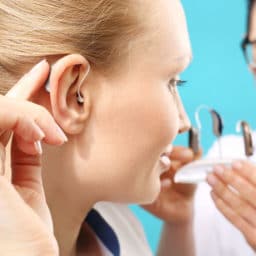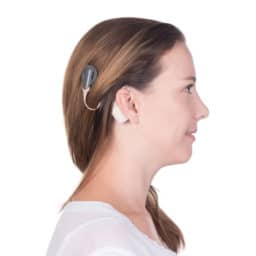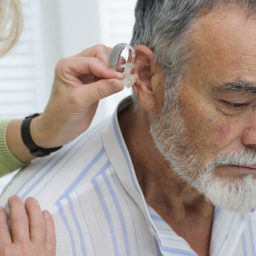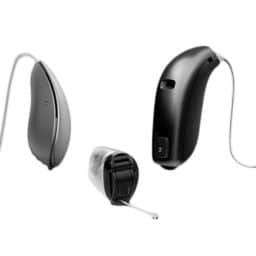BAHA

Bone Anchored Hearing Aid, or BAHA, is a hearing device that relies on direct bone conduction to transmit sound. This surgically implanted device bypasses the auditory canal and middle ear, utilizing bones as a pathway for sound to reach the middle ear. It’s an alternative for people with chronic ear infections, congenital external auditory canal…
Choosing Hearing Aids

If you are experiencing hearing loss, odds are good that you’ll benefit from a hearing aid. But choosing the right one is no simple task. Today’s hearing aids are smaller and more feature-packed than their predecessors, offering an array of options. Narrowing the choices down can be tough, but there are a few important things…
Cochlear Implants

A cochlear implant is a surgically implanted device that bypasses damaged hair cells in the ear and provides electrical stimulation directly to the auditory nerve, giving patients who are severely hearing impaired or profoundly deaf the ability to hear. It is most beneficial for those who cannot be helped with a traditional hearing aid. How…
Earlens
Earlens is a revolutionary new product that converts sound to light, eliminating feedback and allowing patients with hearing loss to communicate more effectively with others. It overcomes some of the limitations inherent in traditional hearing devices because of its broader frequency range, which produces sound that is richer and more natural, with crisp highs and…
Fitting & Counseling

When your audiologist recommends hearing aids, selection is only the beginning of the process. Equally important is the fitting, which involves programming your hearing aids and making adjustments to provide the correct levels of amplification for your particular hearing loss. Counseling is a necessary step to ensure you have realistic expectations, and is crucial for…
Hearing Aid Types
Hearing aids have improved greatly with the advent of digital technology. If you’re picturing big and bulky devices with questionable sound quality, you’ll be pleased to learn today’s instruments are smaller, more comfortable and provide sound that is more natural. They are available in a variety of sizes and styles, so finding one that appeals…
Service & Repairs

Hearing aids are built to provide many years of useful service. However, regular exposure to a harsh environment means they will occasionally encounter problems. No matter how fastidious you are when it comes to hygiene, the ear canals inevitably attract dirt, moisture and earwax buildup – all of which can wreak havoc with the electronic…
Technologies

Hearing aid technology has improved drastically over the past couple of decades. Early devices relied on vacuum tubes and bulky batteries, but today’s instruments take advantage of digital signal processing, microchips and computerization. Keeping track of the latest technological features can be challenging, but we’ll cover a few of the more popular options here. What…